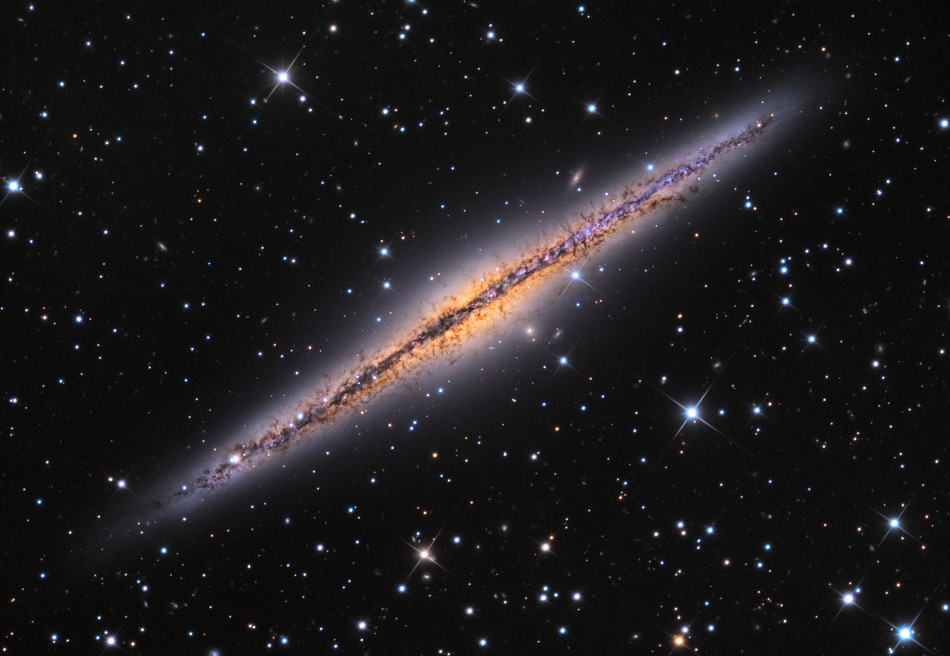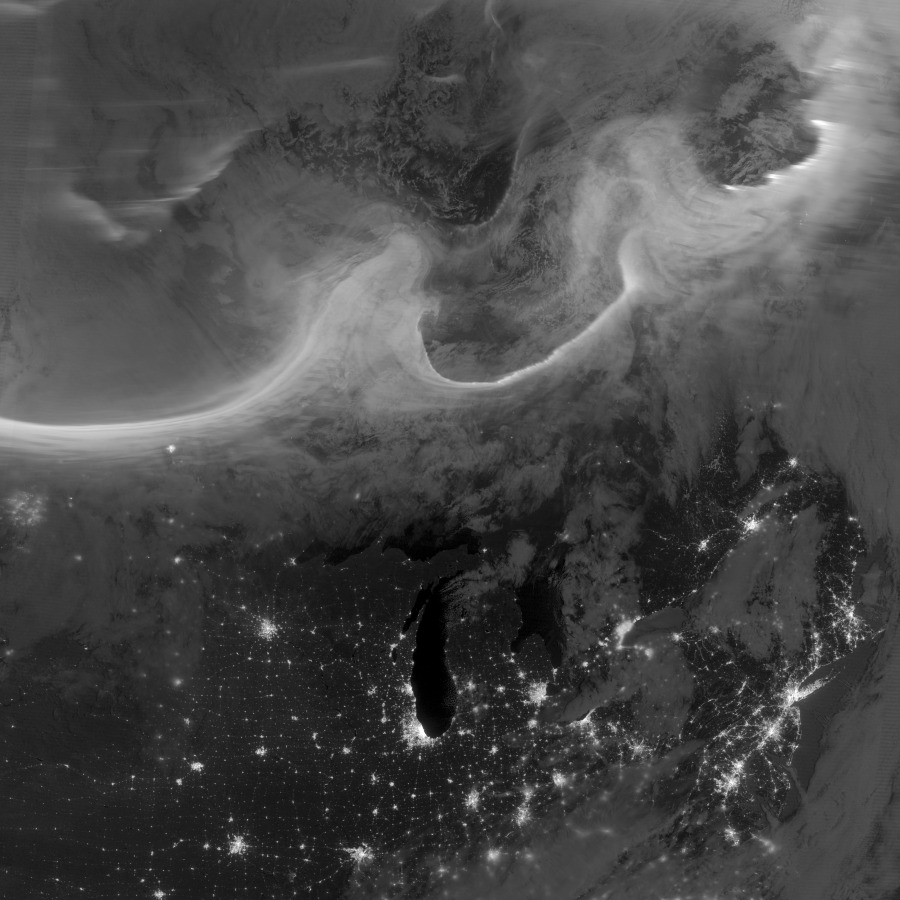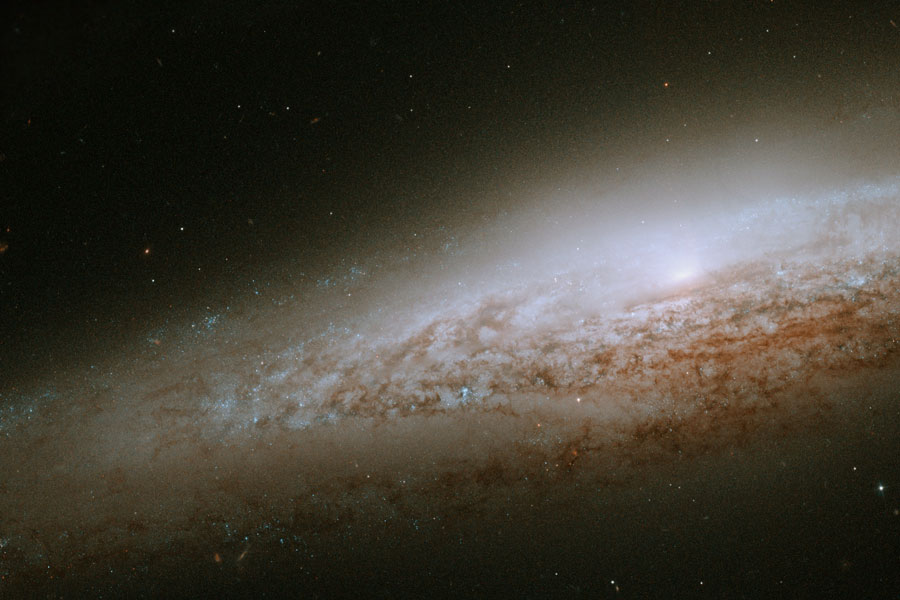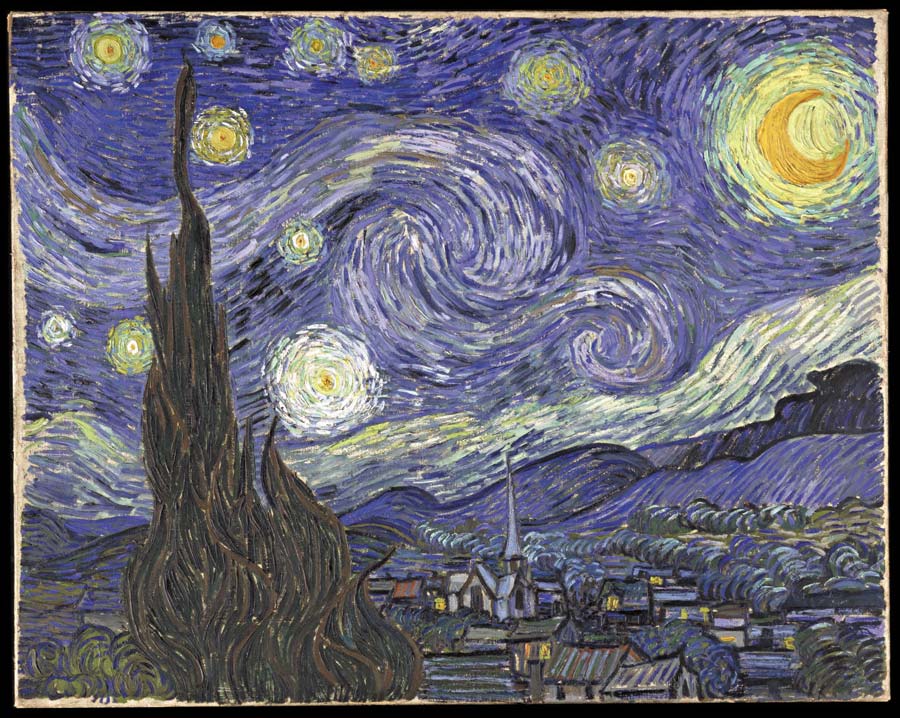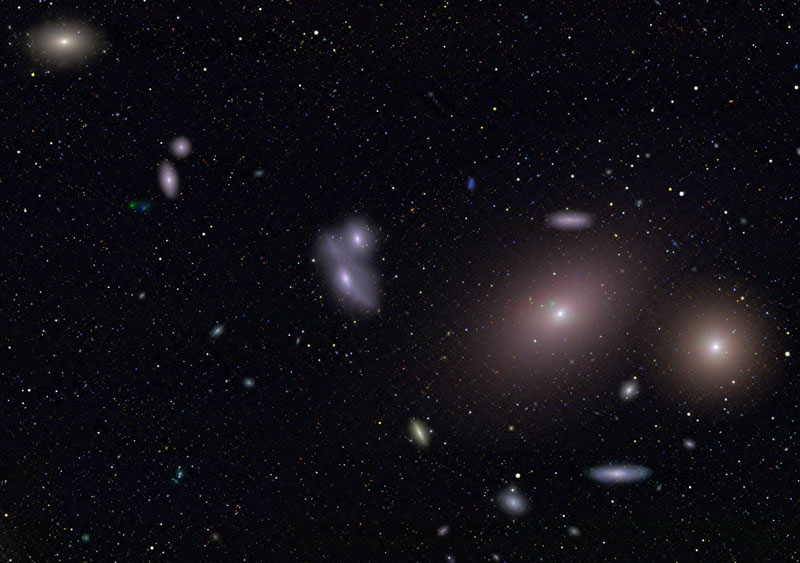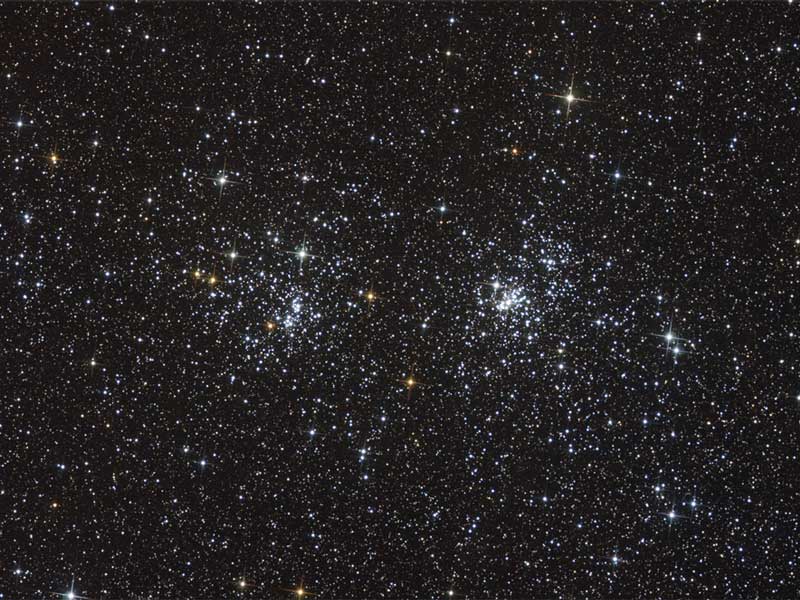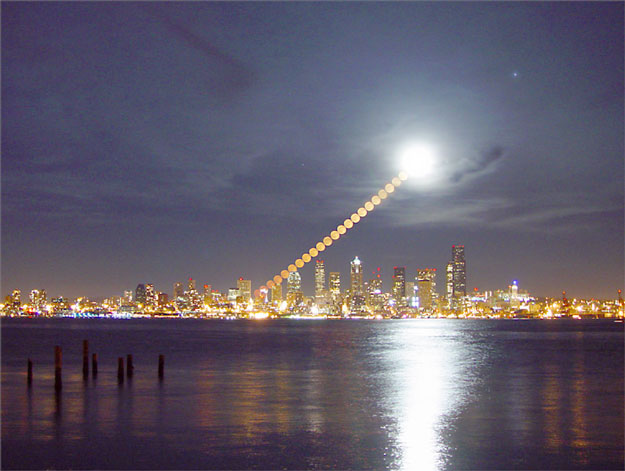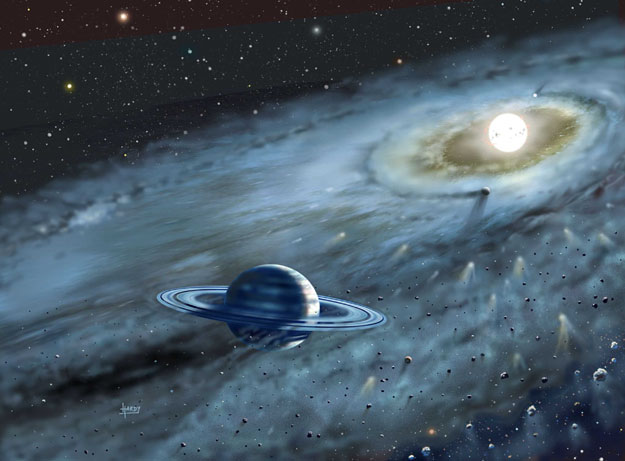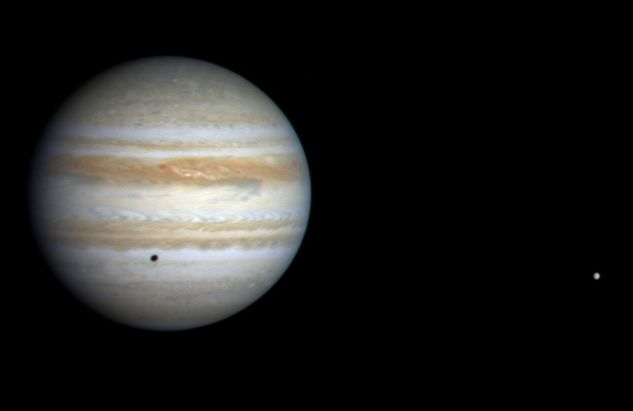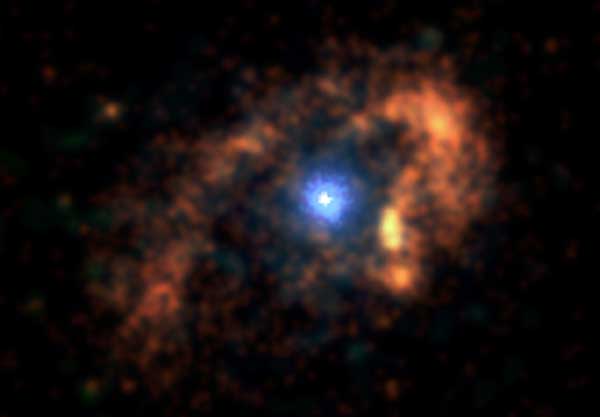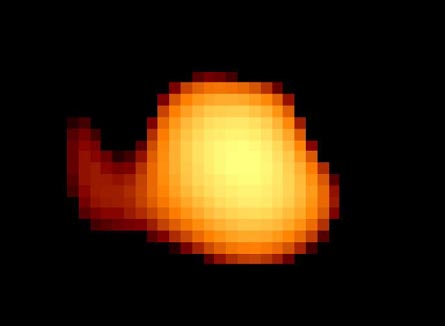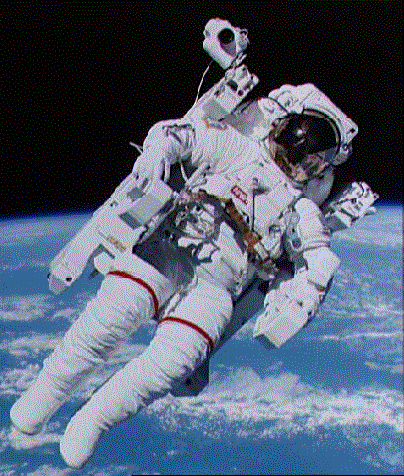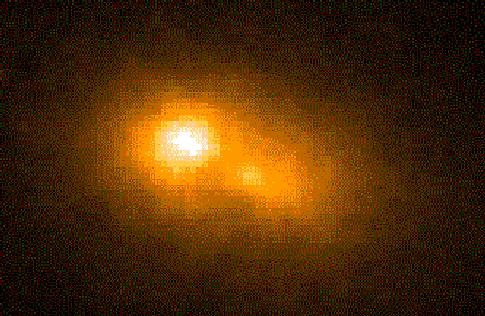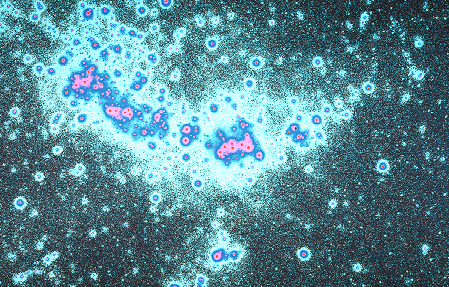| << Previous | Index | Next >> |
2014 As the Moon rose and the Sun set on October 8, a lunar eclipse was in progress seen from Chongqing, China. Trailing through this composite time exposure, the rising Moon began as a dark reddened disk in total eclipse near the eastern horizon. Steadily climbing above the populous city's colorful lights along the Yangtze River, the moontrail grows brighter and broader, until a bright Full Moon emerged from the Earth's shadow in evening skies. Although lunar eclipses are not always total ones, this eclipse, along with last April's lunar eclipse, were the first two of four consecutive total lunar eclipses, a series known as a tetrad. The final two eclipses of this tetrad will occur in early April and late September 2015.
2013 This sharp cosmic portrait features NGC 891. The spiral galaxy spans about 100 thousand light-years and is seen almost exactly edge-on from our perspective. In fact, about 30 million light-years distant in the constellation Andromeda, NGC 891 looks a lot like our Milky Way. At first glance, it has a flat, thin, galactic disk and a central bulge cut along the middle by regions of dark obscuring dust. The combined image data also reveal the galaxy's young blue star clusters and telltale pinkish star forming regions. And remarkably apparent in NGC 891's edge-on presentation are filaments of dust that extend hundreds of light-years above and below the center line. The dust has likely been blown out of the disk by supernova explosions or intense star formation activity. Faint neighboring galaxies can also be seen near this galaxy's disk.
2012
2011 It's the bubble versus the cloud. NGC 7635, the Bubble Nebula, is being pushed out by the stellar wind of massive central star BD+602522. Next door, though, lives a giant molecular cloud, visible to the right. At this place in space, an irresistible force meets an immovable object in an interesting way. The cloud is able to contain the expansion of the bubble gas, but gets blasted by the hot radiation from the bubble's central star. The radiation heats up dense regions of the molecular cloud causing it to glow. The Bubble Nebula, pictured above in scientifically mapped colors to bring up contrast, is about 10 light-years across and part of a much larger complex of stars and shells. The Bubble Nebula can be seen with a small telescope towards the constellation of the Queen of Aethiopia (Cassiopeia).
2010 Does spiral galaxy NGC 2683 have a bar across its center? Being so nearly like our own barred Milky Way Galaxy, one might guess it has. Being so nearly edge-on, however, it is hard to tell. Either way, this gorgeous island universe, cataloged as NGC 2683, lies a mere 20 million light-years distant in the northern constellation of the Cat (Lynx). NGC 2683 is seen nearly edge-on in this cosmic vista, with more distant galaxies scattered in the background. Blended light from a large population of old yellowish stars forms the remarkably bright galactic core. Starlight silhouettes the dust lanes along winding spiral arms, dotted with the telltale blue glow of young star clusters in this galaxy's star forming regions.
2009 The painting Starry Night is one of the most famous icons of the night sky ever created. The scene was painted by Vincent van Gogh in southern France in 1889. The swirling style of Starry Night appears, to many, to make the night sky come alive. Although van Gogh frequently portrayed real settings in his paintings, art historians do not agree on precisely what stars and planets are being depicted in Starry Night. The style of Starry Night is post-impressionism, a popular painting style at the end of the nineteenth century. The original Starry Night painting hangs in the Museum of Modern Art in New York City, New York, USA.
2008 On September 30, a spectacular bolide or fireball meteor surprised a group of amateur astronomers enjoying dark night skies over the Oklahoma panhandle's Black Mesa State Park in the Midwestern US. Flashing past familiar constellations Taurus (top) and Orion, the extremely bright meteor was captured by a hillside camera overlooking the 2008 Okie-Tex Star Party. Astronomy enthusiast Howard Edin reports that he was looking in the opposite direction at the time, but saw the whole observing field light up and at first thought someone had turned on their car headlights. So far the sighting of a such a bright bolide meteor, produced as a space rock is vaporized hurtling through Earth's atmosphere, really is a matter of luck. But that could change. Earlier this week the discovery and follow-up tracking of tiny asteroid 2008 TC3 allowed astronomers to predict the time and location of its impact with the atmosphere. While no ground-based sightings of the fireball seem to have been reported, this first ever impact prediction was confirmed by at least some detections of an air burst and bright flash on October 7th over northern Sudan.
2007
[imghover6=http://apod.nasa.gov/apod/image/0710/Ea ... al_750.jpg]http://apod.nasa.gov/apod/image/0710/Ea ... _lb750.jpg[/imghover6]Credit & Copyright: Jay Ouellet
2006 Across the heart of the Virgo Cluster of Galaxies lies a striking string of galaxies known as Markarian's Chain. The chain, pictured above, is highlighted on the lower right with two large but featureless lenticular galaxies, M84 and M86, and connects through several large spiral to the upper left, including M88. The home Virgo Cluster is the nearest cluster of galaxies, contains over 2,000 galaxies, and has a noticeable gravitational pull on the galaxies of the Local Group of Galaxies surrounding our Milky Way Galaxy. The center of the Virgo Cluster is located about 70 million light years away toward the constellation of Virgo. At least seven galaxies in the chain appear to move coherently, although others appear to be superposed by chance. The above image is just a small part of a mosaic dubbed the Big Picture taken by the Samuel Oschin Telescope at Palomar Observatory, in California, USA. A mural of the Big Picture will be displayed at the newly renovated Griffith Observatory near Los Angeles, California.
2005 Most star clusters are singularly impressive. Open clusters NGC 869 and NGC 884, however, are doubly impressive. Also known as "h and chi Persei", this unusual double cluster, shown above, is bright enough to be seen from a dark location without even binoculars. Although their discovery surely predates written history, the Greek astronomer Hipparchus notably cataloged the "double cluster". The clusters are over 7,000 light years distant toward the constellation of Perseus, but are separated by only hundreds of light years.
2004 Where should this Martian rover explore next? Possible choices for the Opportunity rover team on Earth in early August were to send the Martian robot inside Endurance crater toward the arc-shaped sand dunes on the left, the unusually shaped rock on the right slope dubbed Wopmay, and lower parts of Burns Cliff at the top of the craters inner slopes. The Opportunity rover team on Earth chose 1-meter diameter rock Wopmay as their next target, and closer photographs are already being returned. Below center of the above mosaic is an area already explored by the rover. Opportunity has recently found rocks in Endurance crater with a network of cracks potentially indicative of dried mud, bolstering the case that Mars had a wet ancient past.
2003 Is the Moon larger when near the horizon? No -- as shown above, the Moon appears to be very nearly the same size no matter its location on the sky. Oddly, the cause or causes for the common Moon Illusion are still being debated. Two leading explanations both hinge on the illusion that foreground objects make a horizon Moon seem farther in the distance. The historically most popular explanation then holds that the mind interprets more distant objects as wider, while a more recent explanation adds that the distance illusion may actually make the eye focus differently. Either way, the angular diameter of the Moon is always about 0.5 degrees. In the above time-lapse sequence taken near the end of 2001, the Moon was briefly re-imaged every 2.5 minutes, with the last exposure of longer duration to bring up a magnificent panorama of the city of Seattle.
2002 One of the brightest stars on the sky likely has planets. Fomalhaut, actually the 17th brightest star in the night sky, is a mere 22 light-years away but only a fraction of the age of our Sun. Recent observations in far infrared light with a detector cooled to near zero kelvins indicate a dust disk surrounding Fomalhaut that has both a hole in the center and a warped edge. Now the hole in the center indicates that dust has fallen onto interior planets -- possibly like the Earth -- while the warp at the edge indicates the gravitational pull of a planet like Jupiter or Saturn. The discovery image was taken with the SCUBA instrument through the James Clerk Maxwell Telescope in Hawaii, USA. The above illustration shows what the Fomalhaut dusty planetary system might look like from near the large planet.
2001 A gorgeous collection of dust and gas nebulae in the Northern Milky Way graces the high and far off constellation of Cepheus. With colors based on astronomical filters, this close up of the region highlights stars embedded in curiously shaped cosmic clouds. Near the central faint (9th magnitude) star in the image, dust clouds reflect the starlight, creating a bluish reflection nebula cataloged in 1966 as VDB 142. The area's bright reddish emission nebulae indicate the presence of clouds of atomic hydrogen gas. Stripped of electrons by invisible ultraviolet light, the hydrogen atoms emit their characteristic visible red light as electrons and atoms recombine. Sweptback clouds of obscuring dust, dark nebulae, are silhouetted against the bright background. Representing the stuff stars are made of, all these nebulae lie within the large young star cluster complex IC 1396, 3,000 light years from Earth.
2000 A new spacecraft has entered the outer Solar System: Cassini. Launched in 1997 and bound for Saturn in 2004, Cassini sent back the above image last week while approaching the giant planet Jupiter. Cassini joins the Galileo spacecraft currently in orbit around Jupiter in studying the gas giant and its moons. In fact, observations involving both spacecraft simultaneously are planned in the coming months. This color picture was taken when Cassini was 81.3 million kilometers from Jupiter. The alternating dark and bright bands characteristic of Jupiter's cloud tops can be easily seen. Jupiter's moon Europa is also seen at the far right of the image casting a round shadow on the planet.
1999 Eta Carinae is the one of the most luminous star systems in our Galaxy, radiating millions of times more power than our Sun. Eta Carinae is also one of the strangest star systems known, brightening and fading greatly since the early 1800s. Recently, the Chandra Observatory observed Eta Carinae in X-ray light, adding even more unanticipated pieces to this enigmatic puzzle. Pictured above, a horseshoe-shaped outer ring about two light-years across has been discovered surrounding a hot core measuring three light-months across. One thing appears likely: these structures were caused by collisions involving matter expelled from the center at supersonic speeds. Speculation continues that Eta Carinae will be seen to undergo a supernova explosion sometime in the next thousand years.
1998 Most stars appear only as points of light. Early last year, Betelgeuse became the second star, after our Sun, to have it surface resolved. Later last year, Mira was added to the list. Mira A is a red giant star undergoing dramatic pulsations, causing it to become more than 100 times brighter over the course of a year. Mira was discovered to be the first variable star 401 years ago today by David Fabricus. Mira can extend to over 700 times the size of our Sun, and is only 400 light-years away. The above photograph taken by the Hubble Space Telescope shows the true face of Mira. But what are we seeing? The unusual extended feature off the lower left of the star remains somewhat mysterious. Possible explanations include gravitational perturbation and/or heating from Mira's white dwarf star companion
1997 NASA astronauts can float free in space without any connection to a spaceship. Here astronaut Bruce McCandless maneuvers outside the Space Shuttle Challenger by firing nitrogen gas thrusters on his manned maneuvering unit (MMU). This picture was taken in 1984 and records this first untethered spacewalk. The MMU was developed because astronauts found tethers restrictive.
1996 The center of M31 is twice as unusual as previously thought. In 1991 the Planetary Camera then onboard the Hubble Space Telescope pointed toward the center of our Milky Way's closest major galactic neighbor: Andromeda (M31). To everyone's surprise, M31's nucleus showed a double structure. The nuclear hot-spots are quite close together when considering Galactic distances: M31 is about 150,000 light years across while the above shows only the central 30 light-years. Subsequent ground-based observations have led to speculation that indeed two nuclei exist, are moving with respect to each other, that one nucleus is slowly tidally disrupting the other, and that one nucleus may be the remains of smaller galaxy "eaten" by M31. The nuclei of many galaxies, including M31, are known to be quite violent places, and the existence of massive black holes are frequently postulated to explain them.
1995 Pictured above are clouds of young stars forming an arc in the nearby Large Magellanic Cloud, the nearest galaxy to the our Milky Way Galaxy. These stars are situated in a star forming region known as N 51. The stars are so young they shine mostly in blue and ultraviolet light, and so massive their lifetimes are only millions of years - much shorter than the billions of years of lower mass stars like our Sun. This picture was taken in ultraviolet light by NASA's Ultraviolet Imaging Telescope in March 1995. The reason the arc has the observed shape is currently unknown.
| << Previous | Index | Next >> |

